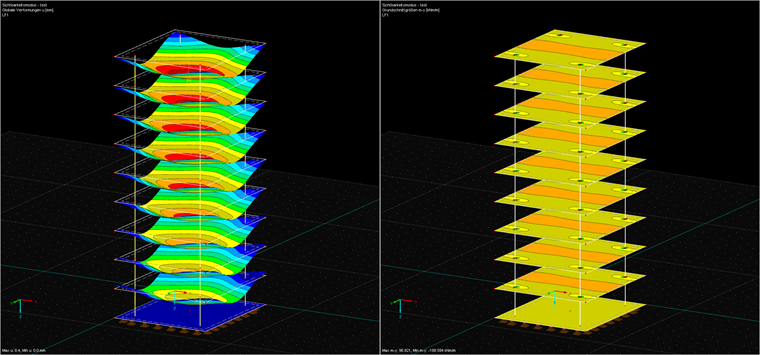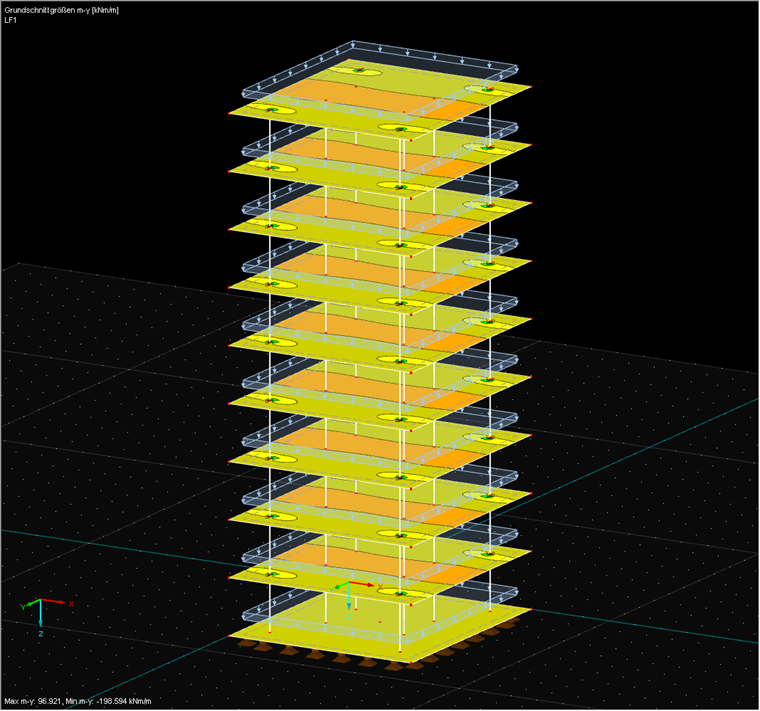First, please note that the local deformations of surfaces always refer to the undeformed structural system. Therefore, in the case of a multi-story building, the deformations of the top floor also include the deformations of the lower floors, as shown in Image 01 on the left.
Image 01 on the right shows the corresponding bending moment m‑y. It is identical for the floors, as expected for this simple model. In such a case, the partial calculation of the individual floors is not a problem, because the relative deformation seems to be the same for each floor.
However, it becomes a problem if the supporting elements are subjected to a different load, or if the stiffness of the supporting elements within one floor is different. Image 02 shows the bending moment my of such a structural system. It is apparent that the distribution shows the greatest differences especially between the bottom floor and the top floor. In this particular case, internal columns with a less rigid cross-section were entered in addition to the corner columns. For this reason, the relative deformation increases more with each additional floor in the middle than at the corner columns.
In reality, this structure cannot exist in this way because the floors are manufactured one after the other and thus the deformations (for example, due to self-weight) are compensated from one floor to another. Thus, it is a specific construction stage problem. Therefore, the question is if the effects can be neglected, or if it is necessary to analyze the results with the RF‑STAGES add-on module, for example.

